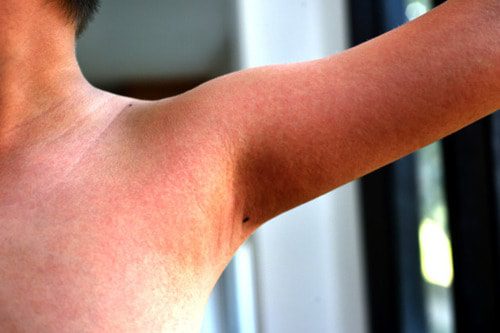
Despite our great efforts as parents to care for our children's health, it's nearly impossible to prevent them from ever getting sick.
Scarlet fever or scarlatina is a bacterial illness that develops from strep throat. It causes bright red rashes that cover the body, a sore throat and a high fever. Coughing or sneezing easily spreads the bacteria. Touching the mouth, nose or eyes of someone who is infected will likely cause you to get sick.
Many years ago, scarlet fever was a serious disease that attacked children between 2 and 10 years of age. Most infections resulted in death. This Victorian-era disease hasn't been much of concern these days, but health officials in the UK have seen an increase of Scarlet Fever in the past few years.
It is important for all parents to know the symptoms so they can get medical attention for their children, if necessary. Fortunately, the disease is easily controlled by antibiotics if detected early enough.
Symptoms of scarlet fever
A rash is the most common symptom of scarlet fever. The rash usually looks like a sunburn but feels rough and itchy. It will typically begin on the chest and stomach before spreading. Folds of skin (in armpits, on elbows and knees) are particularly susceptible. The rash will often become a deeper red color in these areas. Overall, this symptom lasts for two to seven days, according to healthline.
Other symptoms include:
-
Fever over 101° F
-
Chills
-
Headache
-
A red sore throat with white or yellow patches
-
Swollen tonsils
-
A flushed face
-
Nausea and vomiting
-
Swollen glands on the back of the neck
-
Pale skin around the lips
-
A tongue that is white with red dots (known as strawberry tongue)
Recommendations for parents
Scarlet fever is very contagious. If your child is sick, prevent them from coming in contact with people. Decrease risk of spreading the infection by washing hands often. Have your child cover their mouth when they cough and sneeze and have them wash their hands frequently.
Cut your child's fingernails to prevent them from scratching their rash. Keep them hydrated, and keep products away that are irritating (like chlorine, cleaning products, aerosols, etc.)
Help keep everyone else in the home healthy by not sharing utensils or towels.
And of course, visit a doctor. Usually, an antibiotic treatment is prescribed. No matter how much your child's health has improved, don't stop the treatment until it is complete.
Irreversible complications
If the disease progresses without antibiotics, the bacteria can spread to the liver, kidneys, tonsils and other systems in the body. In rare cases, scarlet fever can lead to rheumatic fever, a serious condition that affects the heart, joints, nervous system and skin.
Helping to soothe symptoms
Scarlet fever symptoms are very uncomfortable and painful for your child. Try some of these natural remedies to provide relief:
1. Apple cider vinegar
Warm up some apple cider vinegar for your child to sip. The acetic content kills germs and helps soothe a tender throat.
2. Keep moisture in the air
Humidifiers help prevent coughing, which is especially painful with a sore throat. Add essential oils like lavender, eucalyptus and mint to decrease inflammation.
Parents might not be able to prevent illness, but we can do our part to help keep our children as healthy as possible. Remind your children to cover their mouths when they sneeze or cough and to wash their hands frequently.
This article was adapted and translated from the original, "Nuevo brote de la Fiebre Escarlata, una peligrosa enfermedad que ataca a nuestros hijos: Conoce los síntomas." It was originally published on familias.com.

